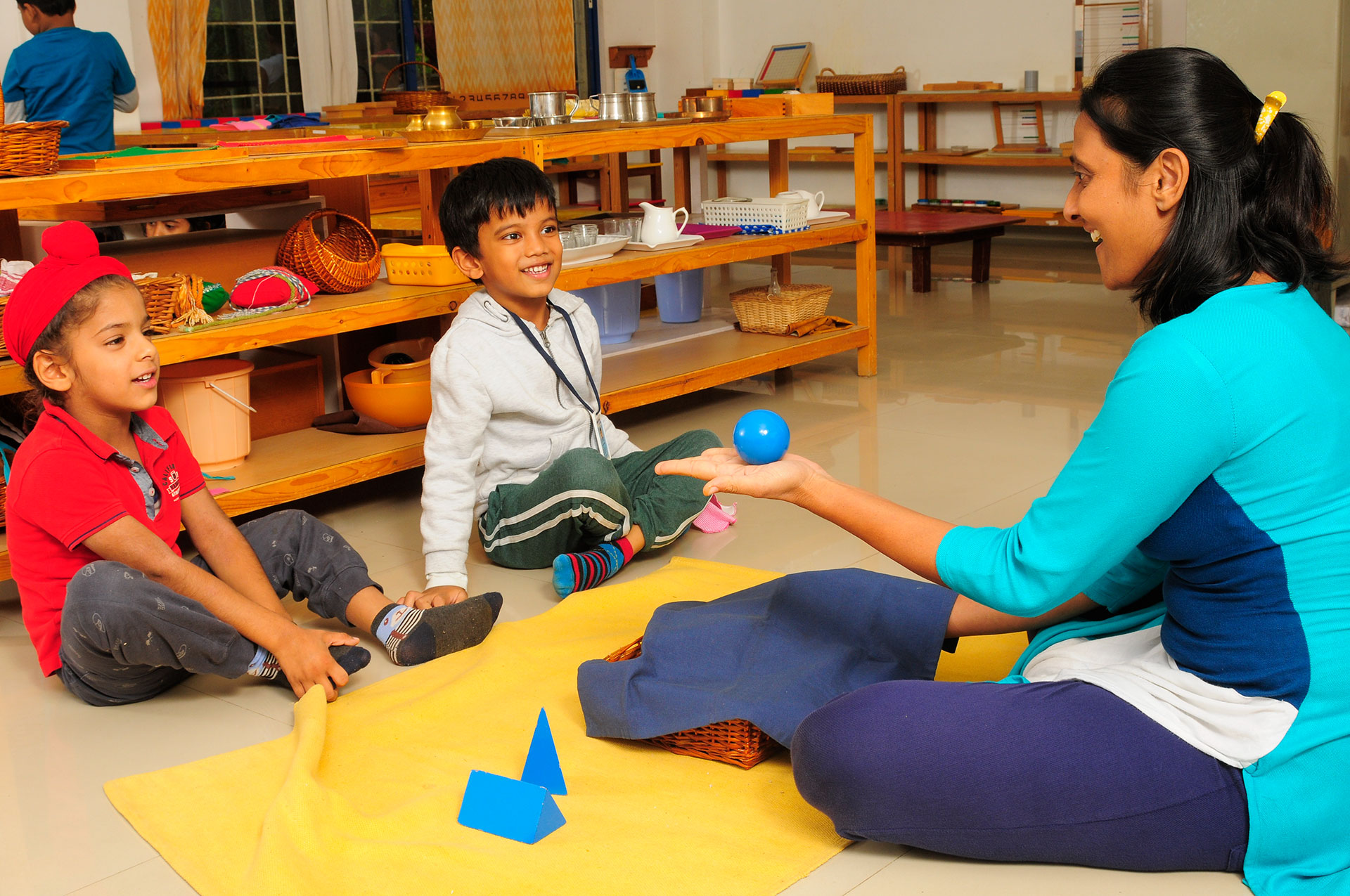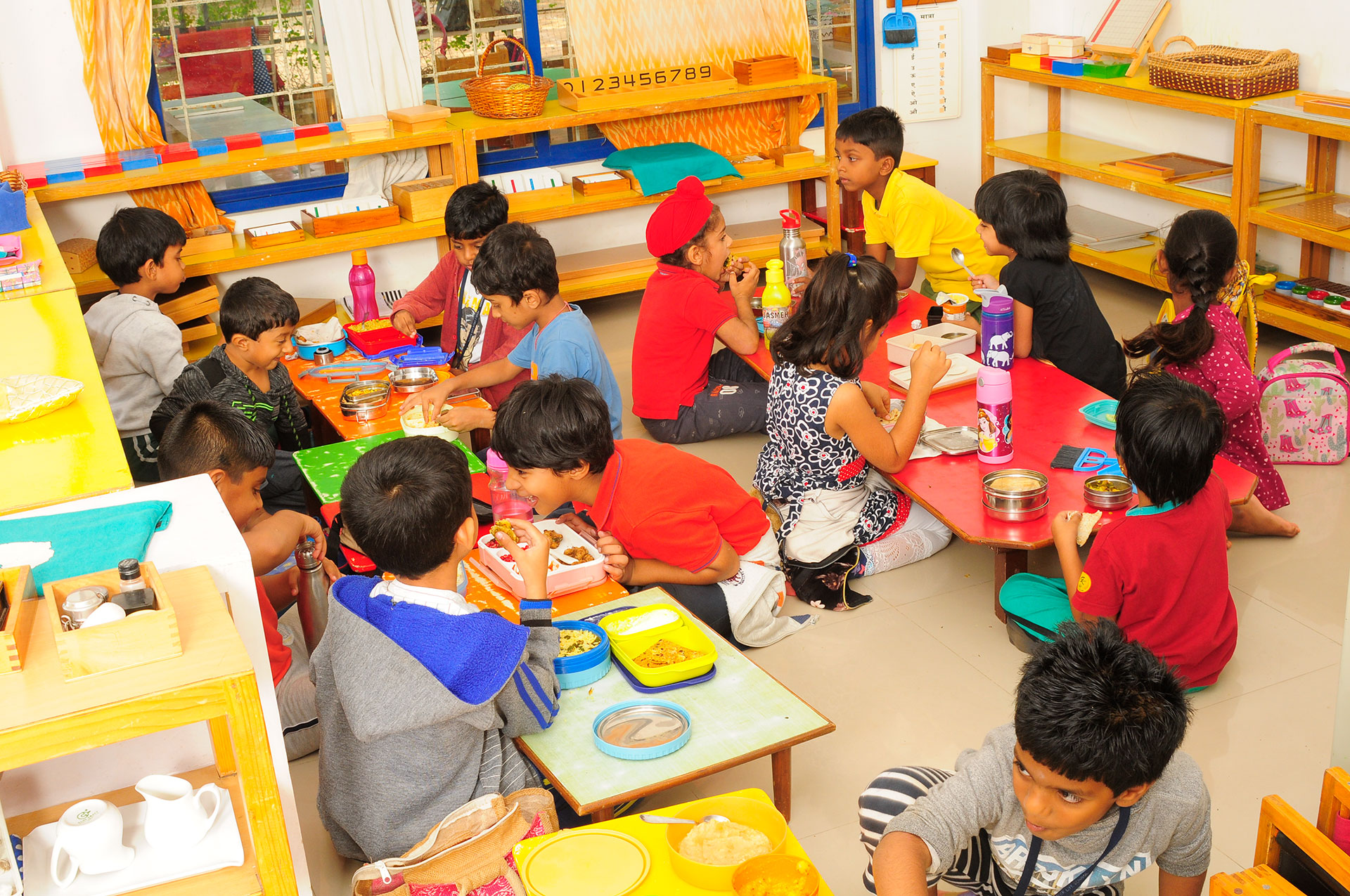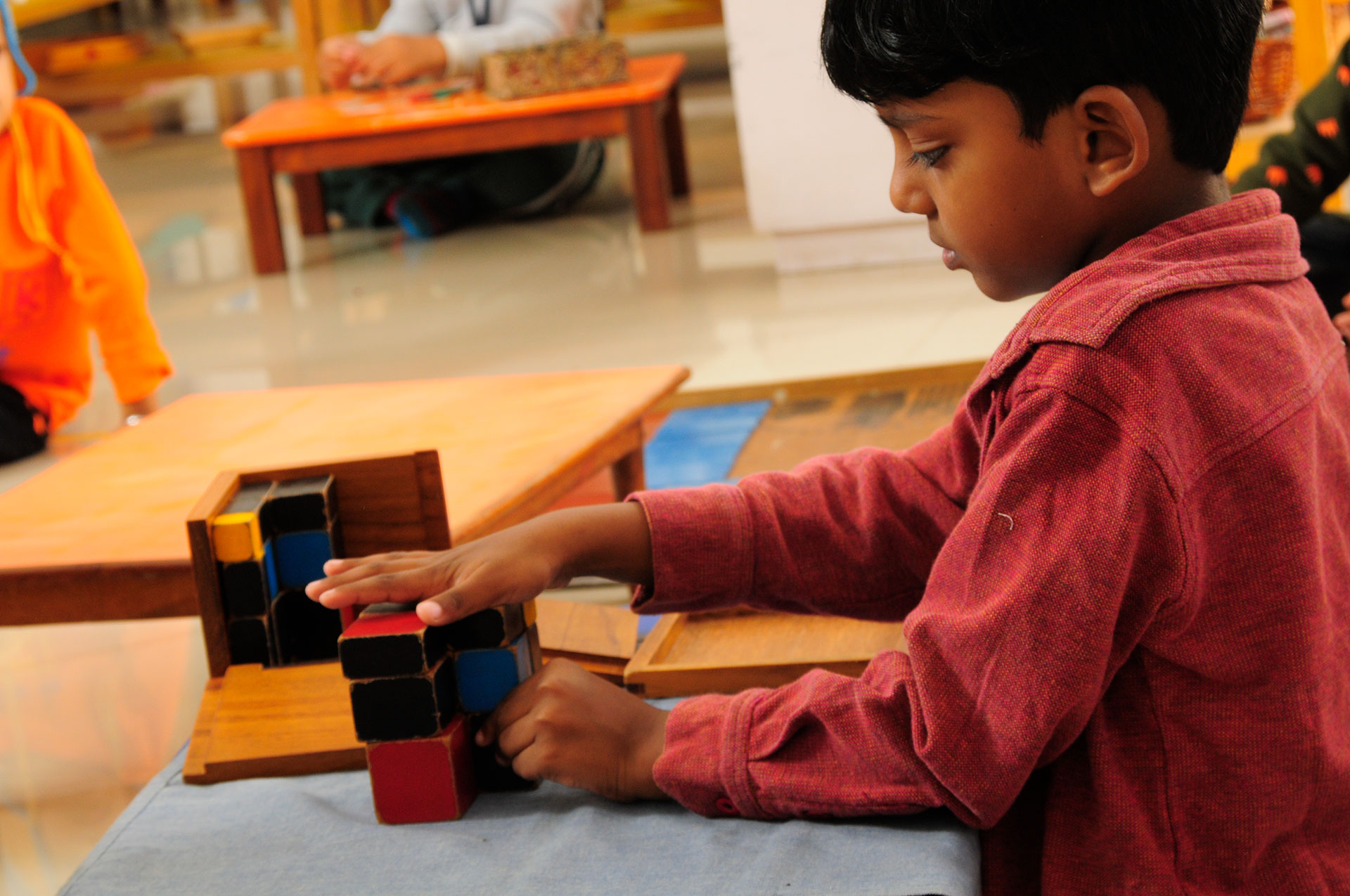Curriculum
The best moments usually occur when a person’s body or mind is stretched to its limits in a voluntary effort to accomplish something difficult and worthwhile. The optimal experience is thus something that we make happen.
Flow Theory (Mihly Csikszentmihly)

Primary Montessori Curriculum
With the freedom to explore the indoor and outdoor environment by choice, the child on any given day is engaged with gathering experiences through the use of concrete materials that lend themselves to manipulation and slowly move the child towards the abstraction of various concepts.
Practical Life Activities – Real life activities that help in the development of motor- coordination, Independence, concentration and finer details of the child’s own culture.
Sensorial Activities – that support the application and refinement of sounds, textures, weights, colours, shapes, and dimensions.
Language activities – A foundation of rich vocabulary, phonics and free composition, stories, poems and music, that supports the skills of speaking, listening, writing as a medium for self expression, and reading.
Mathematics – Hands on use of concrete material to learn about numbers, the various relationships in hierarchies and basic mathematical operations. Geometric representation of all math concepts lays a strong visual foundation for future concepts.
Elementary Montessori Curriculum
The curriculum supports the application of child’s imaginative and reasoning capacities in the academic study of
- Language arts – Listening, speaking, writing and grammar
- History – Natural and Human History
- Social and Natural Sciences
Mathematics and Geometry - Creative Arts and Music
Practical Life Activities that arise from the everyday life and needs of the community of children
Extensive and real time research based learning promote active enquiry on topics of interest. ‘Going Out’ opportunities build the learning bridge from the classroom to the real world.
The Cosmic Education curriculum, which unfolds from the premise ‘all elements and living beings are connected and interdependent’, enables the integration of knowledge among various fields like Geometry to Geography, History to Mathematics and Mathematics to Biology and so on. It also sensitizes and engages the child in discussions of ethics, morals, diversity, personal and social justice as and when they emerge from various aspects of the curriculum.
Middle School Learning Environment – Upper Elementary Learning Environment and Curriculum


Middle and Secondary School Curriculum:
Secondary School at Pebble Creek follows the curriculum prescribed by CBSE. While students move from their Montessori environments to Classrooms, the pedagogy focuses on providing the students with a balance of academic discipline, co-curricular and community exposure, and non-simulated real experiences to facilitate learning.
Some of the highlights of the adolescent years at Pebble Creek are:
- Classroom and Laboratory Learning
- Experiential Education
- Project-based Learning
- Expressive Arts Integration
- Sports Integration
- Health and Fitness Program
- Adolescent Program
- Community Exposure Program
- Guest Lectures and Workshops
- IT Education
- Student Council
